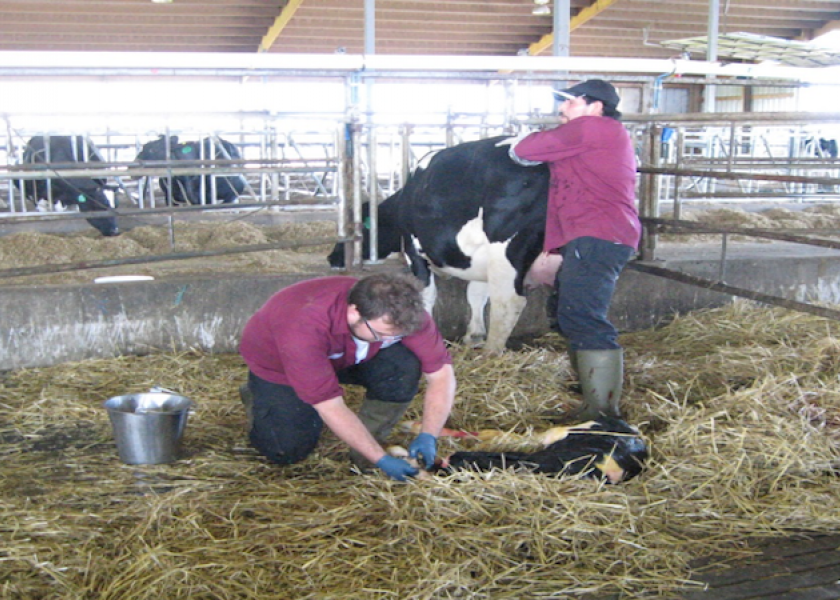August Holstein Calving Traits Will Look Vastly Different

Sire calving ease and daughter calving ease for Holsteins and Brown Swiss will look vastly different for the August sire run, report scientists with USDA’s Animal Genomics and Improvement Laboratory (AIGL).
Historically, the predicted transmitting ability (PTA) calculations for calving ease centered on a breed average of 8 percent for Holsteins and 5 percent for Brown Swiss. In April, the calving traits (along with other traits) were adjusted to a new genetic base to account for genetic improvement over the past 5 years.
“As calving difficulty has been steadily decreasing, dairy producers were surprised to see higher PTAs for calving ease for some familiar bulls,” says John Cole, acting research leader for USDA’s AIGL. “Some bulls had PTAs of 8% to 10%, yet producers saw only 2% to 3% difficulty for many calvings on their farms.”
The confusion was because the genetic base for calving ease traits was updated in April, but the phenotypic base was not. The industry has since agreed to adjust the phenotypic base to match the observed incidence rates, says Cole. To avoid the problem in the future, both the genetic and phenotypic bases will be updated at the same time.
As a result, the August numbers will look vastly different from April. See table.
Breed Trait Current Base (%) New Base (%) New Base Year
Holstein SCE 7.9 2.2 2015
DCE 8.5 2.7 2010
SSB 8.0 5.7 2015
DSB 8.0 6.6 2010
Br. Swiss SCE 5.2 3.0 2015
DCE 5.2 2.8 2010
SCE=sire calving ease. DCE= daughter calving ease. SSB = sire stillbirth. DSB = daughter stillbirth.
Sire rankings have always been correct, though the differences between bulls will look different. Selection indexes, such as net merit and Total Performance Index, will also be adjusted to reflect these differences. Preliminary calculations on the relative emphasis on calving traits in NM$ will decrease from 5% to about 2%, says Paul VanRaden, an AIGL researcher. The 3% emphasis will be assigned to other traits, such as early first calving or health traits.
Coles says dairy producers can stop using a hard PTA cutoff for calving traits to exclude undesirable bulls. “Rest assured that selection on indices such as NM$ or TPI will ensure that the calving traits are properly accounted for,” Cole says.
For a more detailed explanation of calving trait changes, click here.







